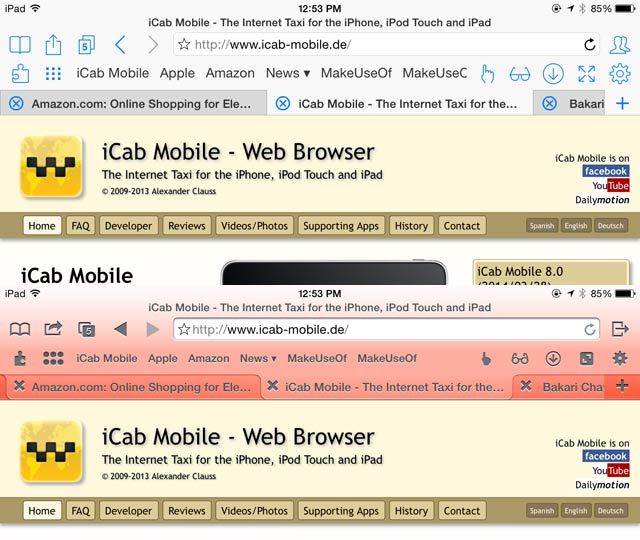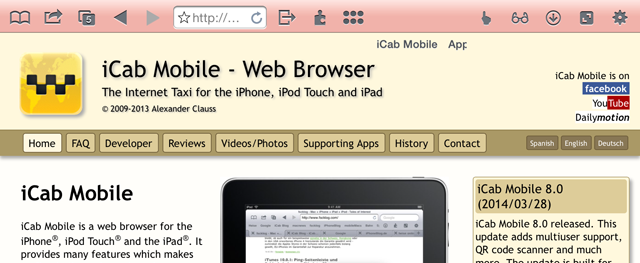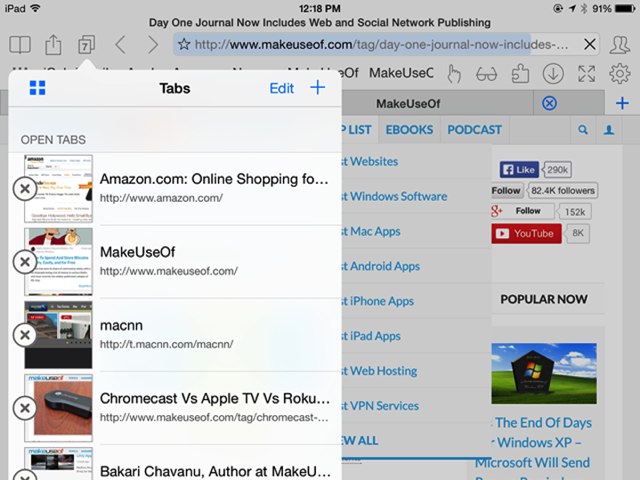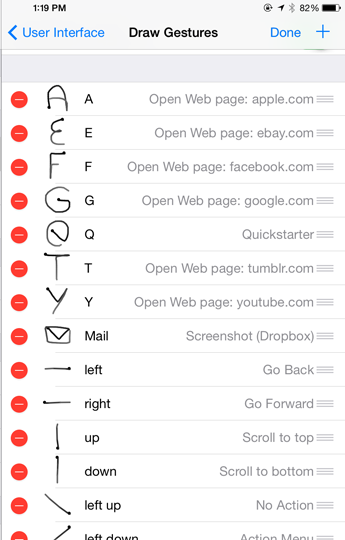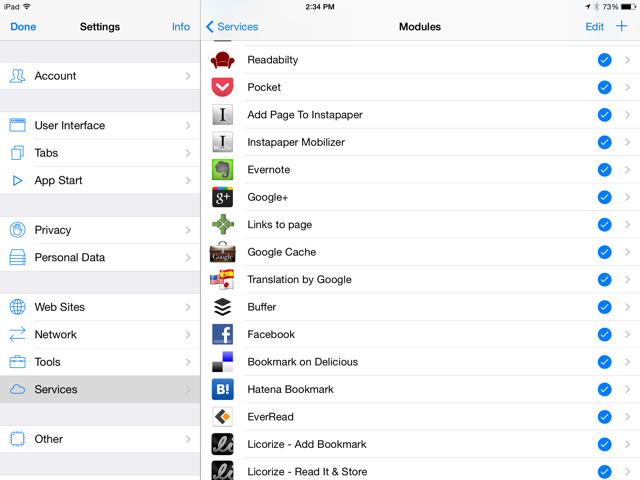When I recently compared six alternative web browsers for the iPad, I didn't know about iCab ($1.99, universal) – a browser several MakeUseOf readers thought should have been a part of my review. And they were absolutely right.
iCab is now in its 8th version, with an optimized iOS 7 redesign and a boat load of features and customisations. It compares well to the Atomic Web (reviewed here) and Mercury web (reviewed here) browsers, but its sharing modules are more extensive, including the ability to save web pages to Safari's own Reading List.
Let's dig deeper and see what iCab has to offer.
The User Interface
When I first launched iCab, I felt the modern iOS 7 design didn't provide much contrast for the tool bar elements, but as I poked around in the app's settings I discovered you can switch from the modern toolbar, back to the classic design, and even customize the color.
As you learn the different ways iCab provides access to its various features and tool buttons, you might actually be tempted to hide the tabs and bookmarks toolbars, the status bar, and even the document title in order to gain a more screen real estate.
Similar to a few other third-party iPad browsers, iCab includes a drop-down window with a preview of your opened tabs, plus it lists the open tabs of iCab on your iPhone if you enable iCloud sharing (located in the services part of settings). If that's not enough, there's also a quick start view of tabs and bookmarked pages which you can see in the screenshot below.
Under user interface of settings you can tap on toolbar icons to arrange or hide various elements. In addition to regular toolbar features found in most web browsers, iCab includes buttons for brightness control, a scrolling pad, font size changes, and access to the password management service, LastPass. You can even select the transparent tool buttons you want visible in full screen mode.
If you really want to go to town while web surfing, you might also use iCab's custom gesture features. The app includes multiple finger gestures for navigating web pages and tabs, but it also includes draw gestures for over a dozen browsing actions. The draw gestures are drawn on an adjustable pallet that can be moved around on the screen. Though there are a couple of dozen default gestures, you can customize these and create new ones.
iCab includes settings for configuring its action and contextual menus, orientation lock, and a scrollbar (in addition to the scrolling pad.)
Sharing Features
I was surprised by the number of modules in iCab for sharing web pages to services including Evernote and SpringPad, Google+, Facebook and Twitter, Readability, Diigo, and Pinterest.
There are also modules for URL shortening, enabling AirPlay, adding a task to the task manager Omnifocus, plus a a module for adding items to your Amazon Wish Lists. This is one incredibly customisable browser, and if you use a niche bookmarking or read later service that isn't supported in Safari, iCab steps up the game.
A Few More Things
If you share your iPad with other people, you can set up two or more accounts for iCab, and then passcode your settings, bookmarks, and other personal data – something even Apple has yet to do. There's also a privacy mode that can be disabled after a specified period when the app is closed. In addition, there are filters for blocking advertising banners, and the ability to save tabs and bookmarks for offline viewing.
The best way to get the most out of what iCab has to offer is to spend time learning about its features, creating draw gestures, and setting up the user interface to fit your typical browsing workflow.
Thanks again to MakeUseOf readers for passing on the recommendation to try out iCab. We always welcome your feedback and recommendations – do you have anything else you'd like to share?


